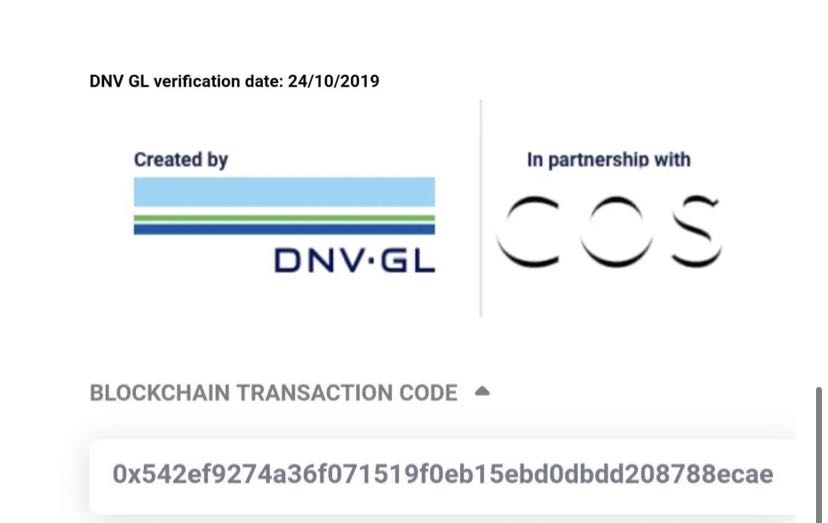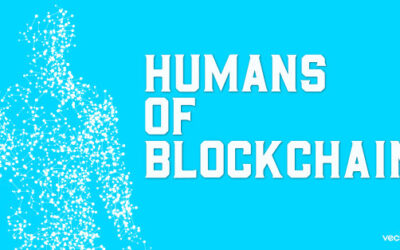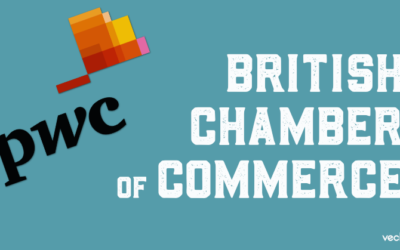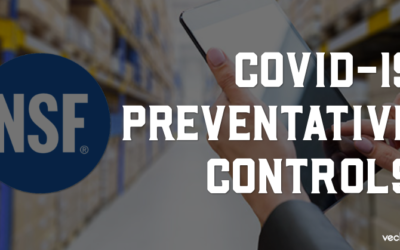Editorial by Ben Yorke on what VeChain needs to be successful in a competitive blockchain industry.
This week, we got another look at a new company working with VeChain’s blockchain technology – COS, a subsidiary of H&M, that focuses on sustainable apparel.

This would seem as a step in the right direction for VeChain, especially after a few months of a COVID-19 induced hangover on the PR front. Mainly, it demonstrated that VeChain was making progress with an H&M brand for the first time since 2018. Still, a good portion of the community was less convinced, questioning whether or not this was just another test, that may or may not result in wide-scale implementation.
This brings us to our first sobering fact: Over the past year, it’s no secret that the VeChain community has become very results-oriented, and is more and more demanding of visible on-chain transactions as the only metric they are interested in. While this argument has its merits, it lacks a bit of vision. For VeChain to succeed, the most important factor won’t be immediate transactional volume, but actual revenue earned from real-world customers. More revenue will lead to more investment opportunities (both for and from VeChain), more developers, more marketing, more R&D, more grants, more offices, and a sustainable long-term business model.
Make no mistake, the community is right to be somewhat cynical. They have been fed a steady stream of announcements and articles about proposed ecosystems and revolutionary business models since before the mainnet even came online. While these partnerships are all backed by real business development, there’s no denying the fact that many of them were idealistic and driven by innovation teams and think-tanks, not organic consumer demand.
So as we sit here more than a year and a half since mainnet launch, we can look at what VeChain truly needs to be successful. Let’s start with the basics:
The era of coming up with an idea and creating a token for it are, for the time being, looking like a fairly unrealistic get-rich-quick scheme. The blockchain has a lot of feasible use cases, but investors are showing that being a decentralized version of Kickstarter isn’t one of them. With the majority of the VIP180 tokens being miles below ICO value, we should stop looking to small cap alt-token projects to add value.
The word “Ecosystem” is overused
An ecosystem implies a thriving circular economy supported by the Foundation, businesses, government agencies, developers, and end-users. While that might be the endgame for blockchain development, right now VeChain’s main struggle should be focused between blockchain projects and businesses. VeChain has always said that their motto was to “Create Valuable Transactions”, not “Create complex commercial relationships between multiple parties”.
Don’t succumb to “Scope Creep”
When a project starts adding new functionality and stakeholders, the original goal tends to get a bit lost. That’s why every adept project manager knows to pick a target and see it through, regardless of the distractions that might appear along the way. The blockchain industry is very guilty of falling into the scope creep-trap, brainstorming revolutionary new business models while pondering about the theoretical potential of the technology. What we really need is hard proof: evidence that businesses are willing to pay for blockchain solutions.
So while discussions about carbon credit schemes and self-reporting vehicle passbooks are nice, and probably something we will see in the future, the current focus should be VeChain’s original use case: Supply chain optimization and product authentication. Don’t expect businesses, consumers, and government agencies to come piling into intricate ecosystems – make it easy for ordinary companies or individuals to start plugging their products into the blockchain.
Two Simple Solutions – ToolChain & MyStory
First, this is where ToolChain really shines. A simple package of IoT and blockchain, sold directly to businesses without the need for additional software development. London fashion designer Sarah Regensburger showed us how easy it was when she added ToolChain’s NFC tags to her creations at Paris Fashion Week earlier this spring. Like Sarah, there are many other companies manufacturing products with unique origins that would also benefit. These come scattered all over various industries including food & beverage, apparel, furniture, and much more. Reaching them and showing how easy integration is will be the first step – convincing them that their product sales or brand reputation will improve is the bigger challenge.

MyStory is the next level up – it’s essentially ToolChain with DNV GL as a trustable third-party verifier and implementation specialist. It comes with a price tag, but for businesses like COS that are serious about their brand image, the added price should be worth it. DNV GL’s respected reputation as a classification company should help with client outreach, but once again the challenge becomes proving that integration will lead to higher sales. That’s why seeing another H&M brand working with VeChain is so encouraging. COS undoubtedly saw the results of the previous use cases, and decided that MyStory’s service was worth it.

The brands at H&M aren’t the only ones. We’ve long seen Italian wine producers (Ricci Curbastro, Ruffino and Torrevento) using MyStory for verification, earlier this spring Italian olive oil producer Buondioli and food producer La Fiammante also appeared to have joined them. This once again shows other brands confirming what the early adopters believed in – trust matters.

If we add H&M’s COS to the mix, we see a steady path of adoption, the kind of progress for DNV GL that earns revenue and keeps the MyStory project a priority for the 150 year old corporate giant. And these are the questions every VET holder should be asking: Does it benefit companies like DNV GL, VeChain, and PwC to keep pushing public blockchain solutions? Will companies pay to authenticate their products? Can VeChain afford to keep hiring employees and expand their operation?
Thankfully, right now the answer seems to be yes. And when you look around at the competition for ToolChain and MyStory, there isn’t much out there, other than extremely expensive consortium solutions from large technology providers running on a permissioned chain like Hyperledger Fabric. It’s exactly ToolChain and MyStory that set VeChain apart from every other public blockchain protocol in the business. You could theoretically build a vaccination tracking network from the ground up on a number of decentralized platforms – but you could only get a complete product authentication software suite in one place: VeChain. That’s why if VeChain is to succeed, it won’t be because of what we saw yesterday on the block explorer. It will be because what companies all over the world are doing, as they take notice of how increasing trust is leading to higher sales, validating their decision to try out blockchain.
VeChain just needs to keep things simple, and stick to what they do best: Authenticating goods and making product data more visible. And with DNV GL around to verify things, it shouldn’t be too farfetched to see VeChain come out on top.






